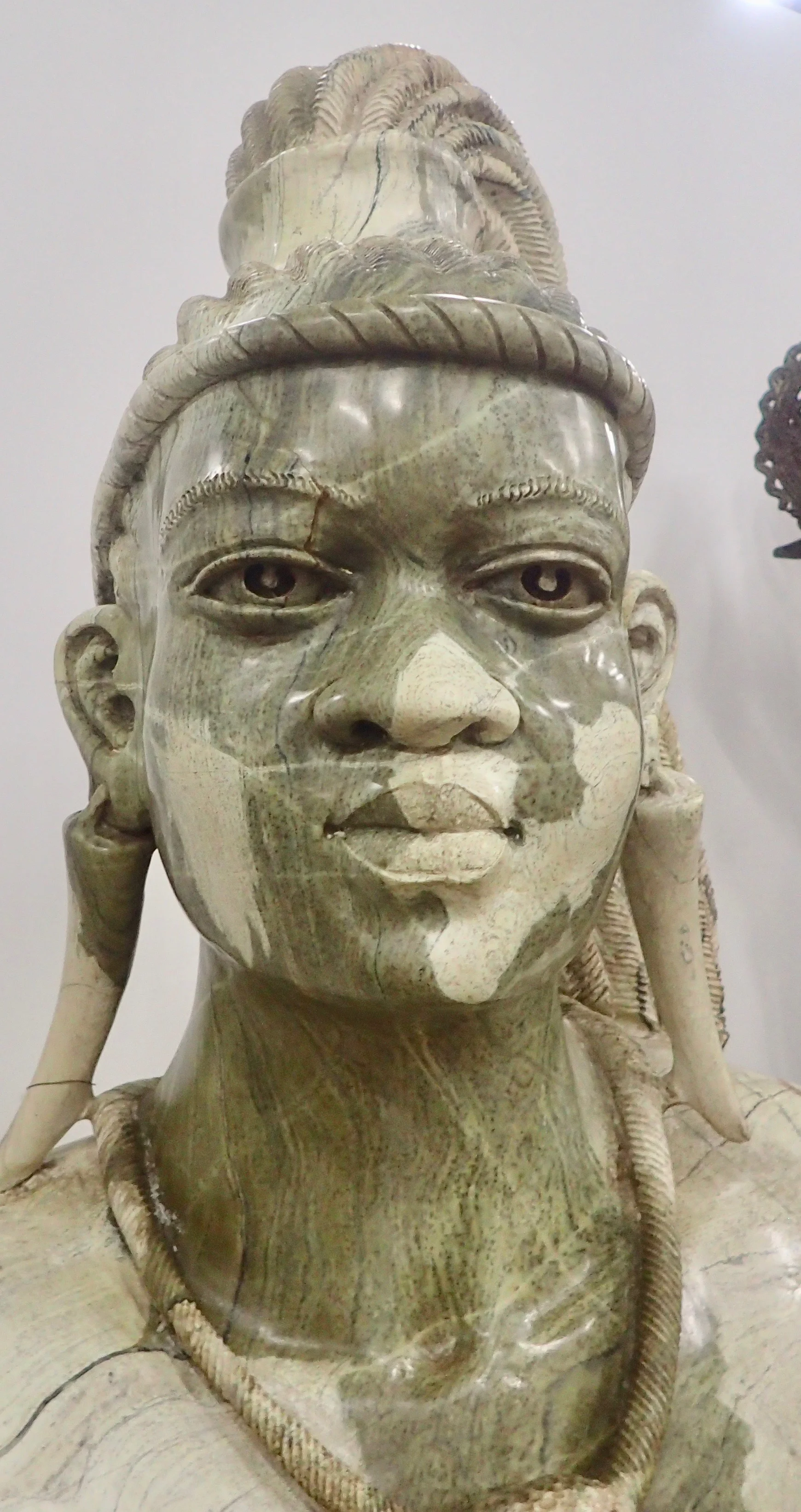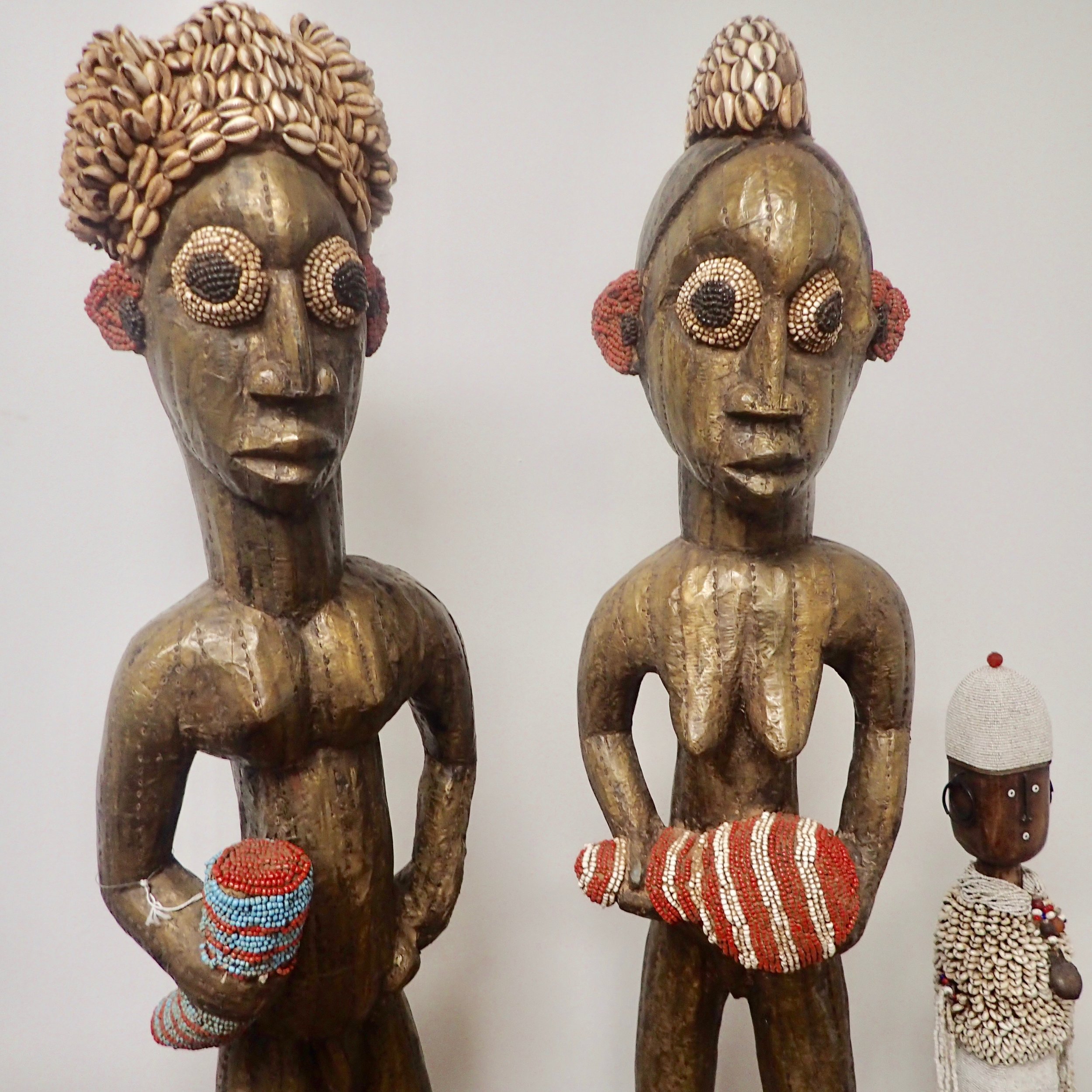Thrones and slaves, weapons and dangling heads -- you'll see an astounding collection of African tribal art at Bronze Kingdom.
This place is really something. It is a spacious, airy museum and gallery filled with more than 300 bronze sculptures and other works of art. The total collection, with more than 2,000 pieces, is drawn from 29 African countries.
I don't generally get revved up about art, so hear me out even if you're art-uneducated as I am. This place is so fascinating I'd go back just to see and learn more. The pieces are actual creations from African tribes -- and those are mighty hard to acquire, considering chiefs in rural villages aren't exactly big on giving away their treasures, especially to Americans.
That's why you won't see art like this elsewhere. It's the love child of Rawlvan R. Bennett, an African-American who made his fortune in the tech industry; he is CEO of Diallo Technologies.
History: The Story of Why You Can See Tribal Art at Bronze Kingdom
Here's what happened. One day 37 years ago, before Bennett had made his fortune, he saw the mask pictured below in a store. He couldn't afford to buy it, but he was so enchanted that he visited the beaded creation regularly. The owner of the store selling the item eventually let Bennett have it for a "good price."
But that magnetism. Why was Bennett so drawn to the mask? He began to figure that out when he later visited Africa for the first time. "I was searching," he says now. "I knew I was African-American, but I didn't know about the Africa across the water that happens to be populated with my relatives. That mask, and the works I've bought since, are pieces of my journey to find the other half of who I am." Bennett's great-grandparents were slaves, and he realized that that's where his story seemed to have begun ... which is wrong. "The story started across the water," he says. "I began collecting these pieces as a way to connect with Africa."
Over time, Bennett began collecting traditional wooden African statues and masks. Then, he had the opportunity to live in South Africa for awhile. He realized he wanted to own the types of bronze statues used by tribes residing deep in the bush. He couldn't just visit. "These are very small villages with no running water, no Holiday Inns," he says. And they sure weren't approachable by any major roads.
Bennett hired people to start working on acquisitions for him. It took a year and a half, but then he found his opportunity. The wooden footbridge that separated two tribes had been washed away in a storm. At Bennett's suggestion, his representatives offered to build a steel and cement bridge for the communities in exchange for a collection of bronze art (pictured below).
And Then It Mushroomed: See African Tribal Art at Bronze Kingdom
That got the African-art ball rolling. Over time, Bennett traded assistance for artwork throughout the African continent. His collection filled up the northern Virginia home he shared with his wife, Iantress, and their children.
Citing Orlando's huge visitor statistics -- 68 million people passed through in 2016, and that's not counting residents -- the Bennetts rented out a space in a South Orlando office park and opened for business.
You can visit most weekdays. Admission is $10 for adults, $5 for children.
Bennett won't always be around to give you the tour media received today, but that's OK. Director/Curator Philip Ringler and/or Director of Sales Khalil Osiris are always around, and they're just as passionate about the African tribal art at Bronze Kingdom, which bills itself as the largest African bronze collection in the world. Group tours are available too, and I think a solid two-hour immersion with guidance is the way to go.
Give it a try. Whether you just want to look and learn, or are interested in buying a piece -- some are reasonably priced -- you will have an experience unlike any you have had before -- even if you have a PhD in Art History.
UPDATE: Bronze Kingdom moved after this posted, so the backdrop is different than what yo see here. Bronze Kingdom is now in the Orlando Fashion Square Mall, 3201 E Colonial Dr., M16, Orlando, FL 32803, near the movie theaters. The phone number is 407.203.8864 and the website is bronzekingdom.com. Report back. I'd love to hear what you think.










